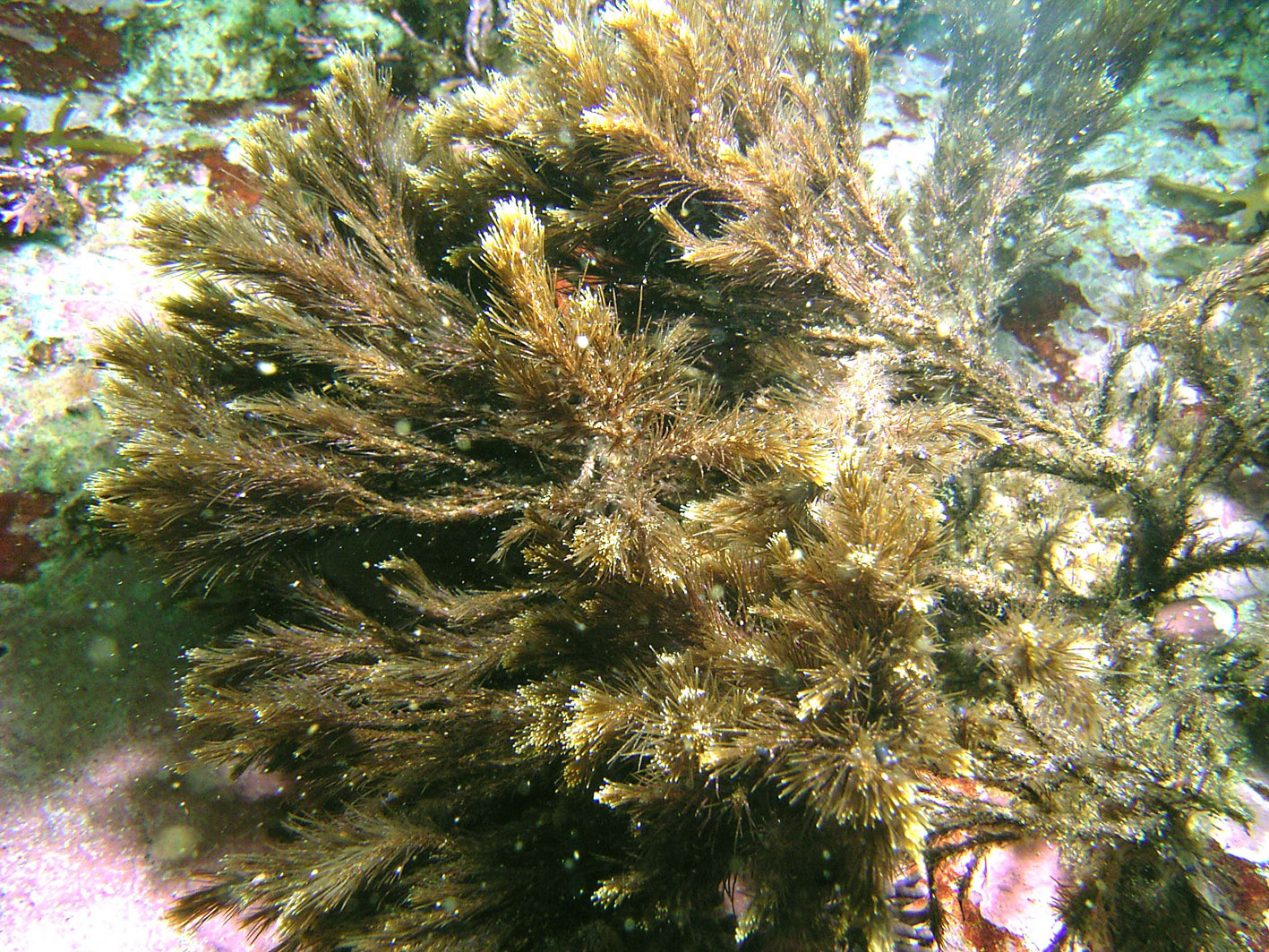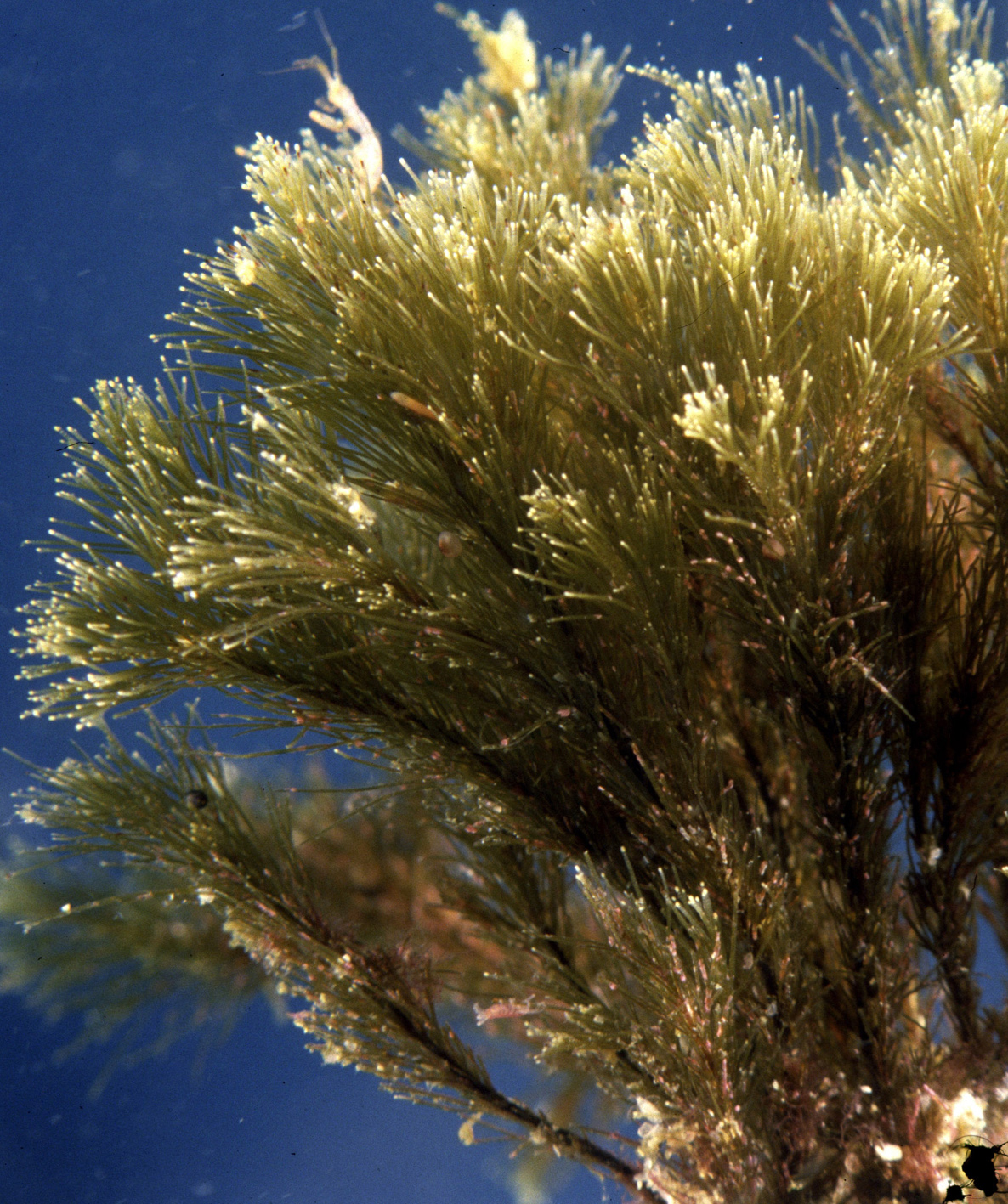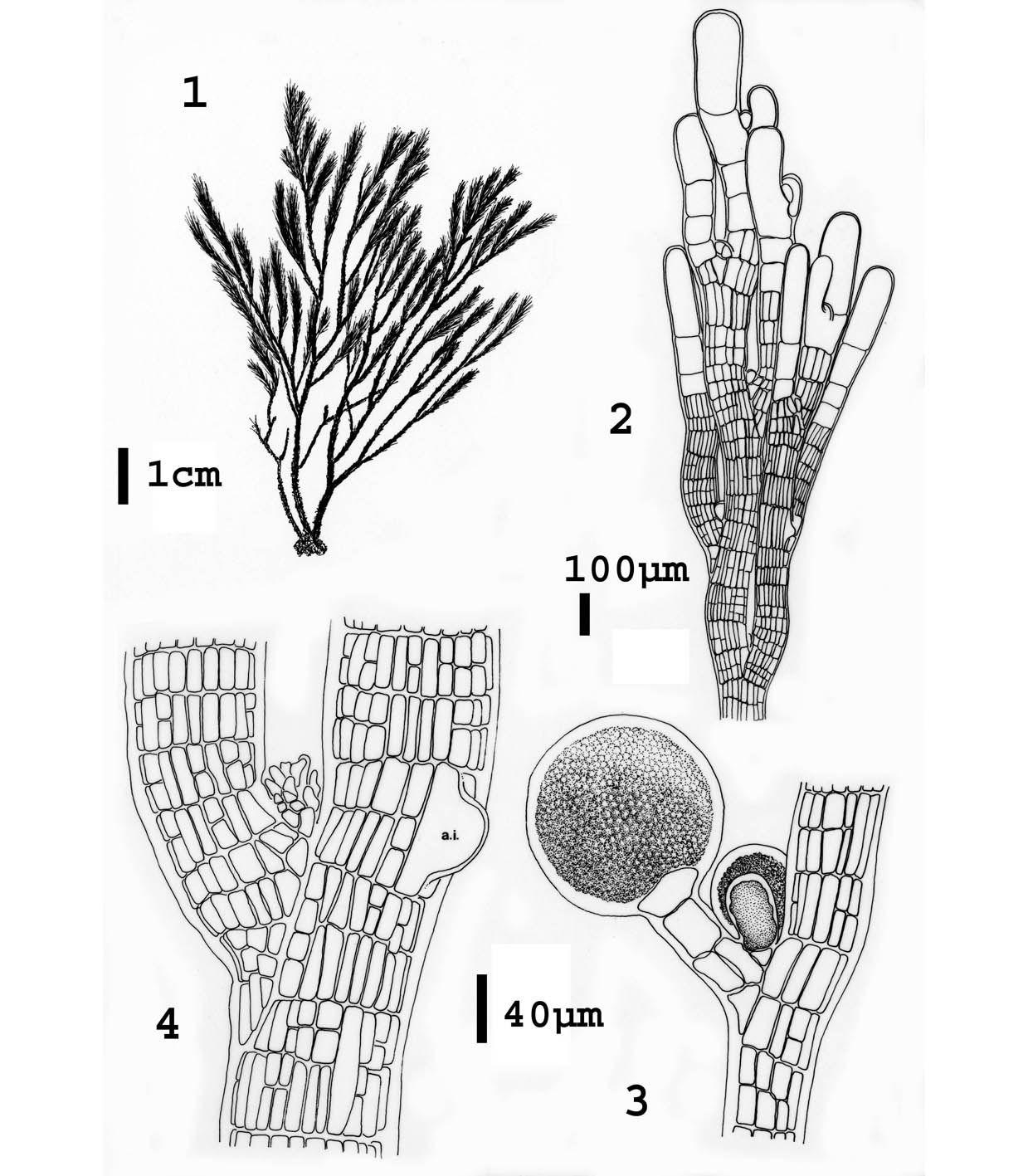Seaweeds of the South African South Coast


Sphacelariales
Stypocaulaceae
Halopteris funicularis (Montagne) Sauvageau 1904: 94
Plants light to dark brown, up to 20 cm long, comprising one to several much-branched axes, each profusely branched, with the appearance of a stiffly furry bottle-brush. Holdfast rhizoidal. Lateral branches produced in irregularly radial pattern by divisions of the apical cell. Some branches longer, little branched, others determinate, all branches tapering to a point. Main filaments in mid-lower regions with single layer of cortication by down-growing rhizoids. Phaeophycean hairs absent. Sporangia in dense clusters in axils of laterals, interspersed with curved multicellular paraphyses. Sporangia globose, 30-35 µm in diameter, terminal on a uniseriate stalk; parpahyses 15-20 µm in diameter, mainly uniseriate but with occasional longitudinal division. Gametophytes rare, probably dioecious. Oogonia spherical, up to 140 µm in diameter, each borne on a pedicel of up to 5 cells in clusters of up to 3 in axils of laterals. Antheridia not seen.
Collections, ecology and regional distribution
Recorded from Port Nolloth to Port Alfred (1-32). Found in the lower eulittoral and subtidal down to at least 12 m depth.
World distribution: Also known from Namibia, Argentina, Australia, Tasmania, Chile, Antarctica, Tristan da Cunha and South Georgia (Guiry & Guiry 2017).
Type locality: Auckland Islands (Silva et al. 1996).
Note: This species was previously called Stypocaulon funiculare (e.g. Stegenga et al. 1997), but the genus Stypocaulon was subsumed into Halopteris by Draisma et al. (2010).

Halopteris funicularis, habit, False Bay.

Halopteris funicularis.

Halopteris funicularis. 1. Habit. 2. Thallus apex. 3. Details of older axis showing pattern of longitudinal and transverse separation (a.i. – initial of adventitious branchlet). 4. Oogonia. Reproduced from Stegenga et al. (1997) (as Stypocaulon funiculare).
References Halopteris funicularis
Draisma, SGA, Prud'homme van Reine, WF & H. Kawai. 2010. A revised classification of the Sphacelariales (Phaeophyceae) inferred from a psbC and rbcL based phylogeny. European Journal of Phycology 54 (3): 308-326.
Guiry, M.D. in Guiry, M.D. & Guiry, G.M. 2017. AlgaeBase. World-wide electronic publication, National University of Ireland, Galway. http://www.algaebase.org; searched on 16 October 2017.
Sauvageau, C. 1904. Remarques sur les Sphacélariacées. Journal de Botanique [Morot] 18: 88-104.
Silva, P.C., Basson, P.W. & Moe, R.L. 1996. Catalogue of the benthic marine algae of the Indian Ocean. University of California Publications in Botany 79: 1-1259.
Stegenga, H., Bolton, J.J. and R. J. Anderson. 1997. Seaweeds of the South African west coast. Contributions from the Bolus Herbarium 18: 655 pp.
Cite this record as:
Anderson RJ, Stegenga H, Bolton JJ. 2016. Seaweeds of the South African South Coast.
World Wide Web electronic publication, University of Cape Town, http://southafrseaweeds.uct.ac.za; Accessed on 07 January 2026.